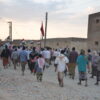The Social Science Research Council’s (SSRC) Next Generation Social Sciences in Africa (Next Gen), program marks its tenth anniversary this year. With generous funding from the Carnegie Corporation of New York (CCNY), Next Gen was established in 2011 to respond to the crisis in higher education in Africa where most university academic staff did not yet possess doctoral degrees. The program was also established to help Africa-based social scientists complete their doctorates in a reasonable time through a sequence of fellowships. In a context of liberalization of higher education, increased enrollment, and heavy teaching load, most academics in Africa often experience prolonged delays. The program currently supports writing, research, and completion of PhDs, and at the same time seeks to expose its fellows to a global community of researchers. Thus far, the program has awarded over 400 doctoral grants to over 390 PhD students registered in universities in Uganda, Tanzania, Kenya, Nigeria, Ghana, and South Africa.
In the last ten years, students from nearly 20 African countries have benefited directly from Next Gen grants. Besides the six eligible countries, Next Gen counts among its alumni doctoral students from Mozambique, South Sudan, Burundi, Rwanda, Botswana, Eritrea, Ethiopia, Malawi, the Democratic Republic of Congo, and elsewhere. Through its three main grants, the doctoral proposal fellowship, the doctoral research fellowship, and the doctoral completion fellowship, Next Gen has grown to be one of the biggest funders of doctoral studies in Africa today. As we write this, over 100 Next Gen fellows have successfully completed their doctorate degrees with the vast majority employed as lecturers in institutions of higher learning in Africa.
The purpose of this essay is to attempt to make sense of some of the data about its fellows that Next Gen has collected over the last ten years.
Next Gen fellows across Africa
Figure 1 below shows the distribution of Next Gen awards over the last ten years. South Africa is the leading country insofar as the number of successful awards is concerned. Accounting for 46 percent (185 awards) of all awards to date, South Africa’s performance reflects its comparatively superior research infrastructure and its position as the top destination of intra-Africa doctoral students’ mobility. Not only does Next Gen receive comparatively innovative proposals from doctoral students based in South Africa, it is also the most diverse insofar as citizenship is concerned. Uganda (17 percent), the second most successful country in the Next Gen fellowship competition, has over the years punched above its weight, slightly exceeding Nigeria (16 percent) despite Next Gen receiving many more applications from doctoral students based in Nigeria. The development of research-intensive graduate programs like the Makerere Institute of Social Research (MISR) at Makerere University has significantly boosted the competitiveness of proposals from the country in the last five years. MISR students comprise a significant percentage of the total successful applications from Uganda.
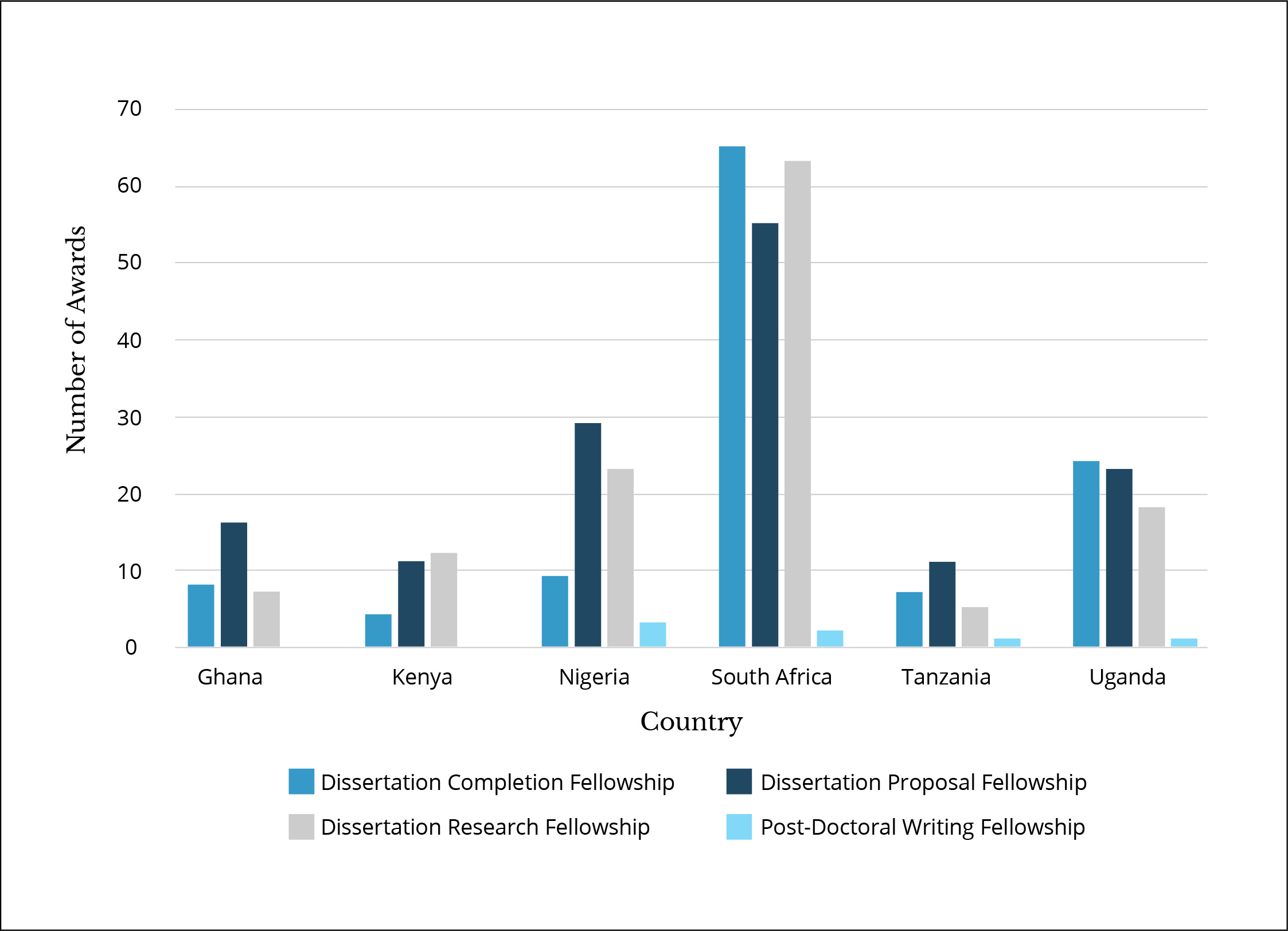
The data on the six eligible countries only tells part of the story of Next Gen’s support of doctoral studies in Africa for the past decade. When we narrow the analysis to citizenship, Nigerian nationals (studying within and across the six eligible African countries) are the most populous among Next Gen grantees, followed closely by Ugandans and South Africans. We should note from figure 2 that the significant presence of Zimbabwean doctoral students in South Africa makes them the biggest cohort outside of the six eligible countries. The data seems to suggest that Zimbabwe and Nigeria have high mobility among doctoral students, especially in the social sciences. All successful applicants of Zimbabwean nationality were registered in South African universities at the time of application. Thus far, out of the 401 grants since 2012, 24 percent have gone to Nigerians, 15 percent to Ugandans, 14 percent to South Africans, 13 percent to Zimbabweans, 10 percent to Kenyans, 8 percent to Tanzanians, and 7 percent to Ghanaians. Zimbabwe and Ethiopia are the two countries whose citizens win significant grants although they are outside the six eligible countries. Most applications from doctoral students from these two countries studied in universities in South Africa and Uganda, highlighting the importance of the two countries in the “internationalization” of graduate studies in Africa.
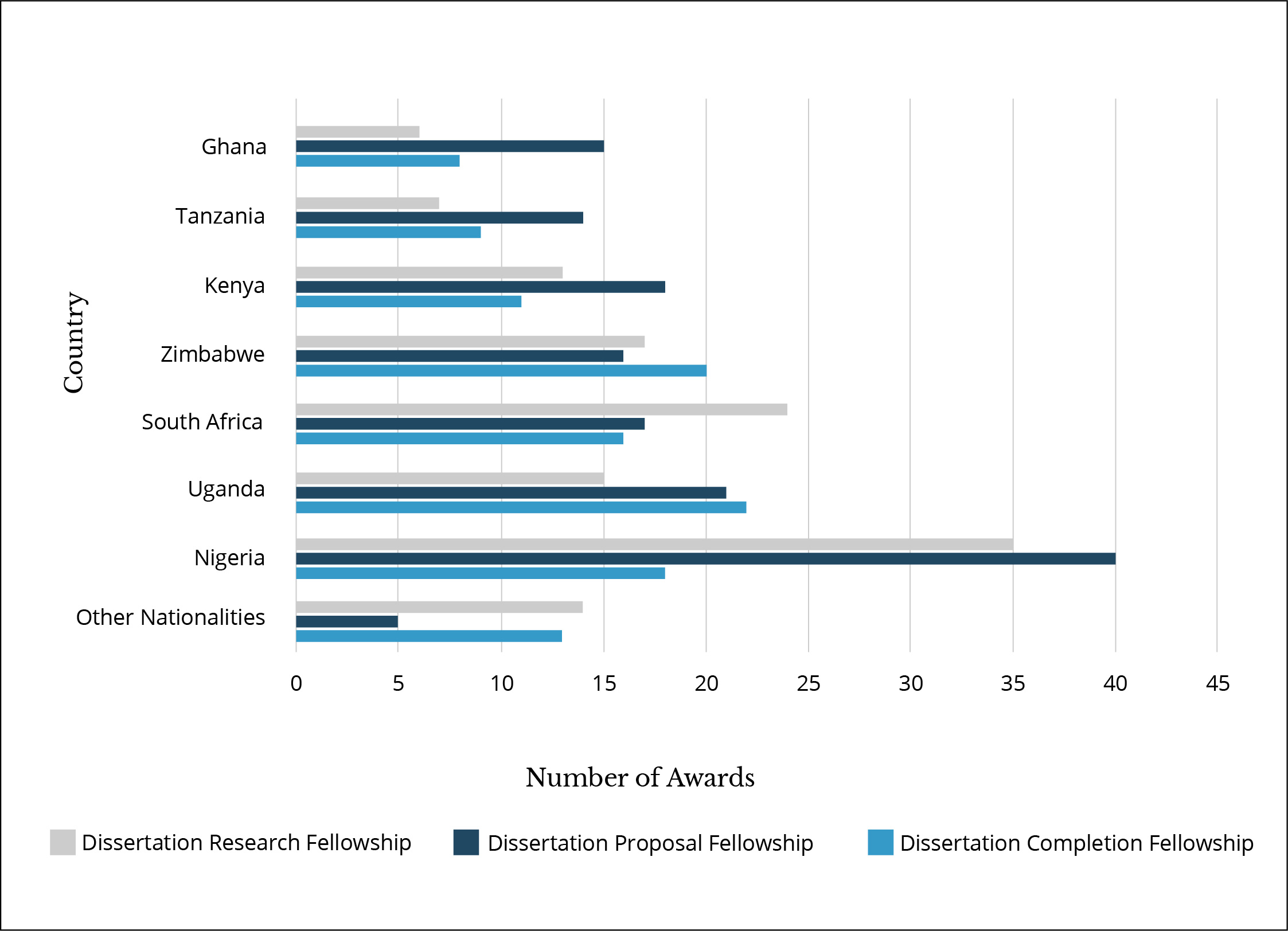
Our data also shows that research-intensive universities in Africa continue to produce more Next Gen awardees. These trends show how individual countries in Africa have “positioned” specific universities over the years. It is not surprising that in the six eligible countries, successful awards reflect existing research and institutional hierarchies. In Ghana, for instance, 74 percent of successful Next Gen awardees came from the University of Ghana, with the rest coming from other universities like the University of Cape Coast or the University of Development Studies, among others. In Nigeria, for the last decade, 47 percent of all successful Nigerian-based applicants were registered doctoral students at the University of Ibadan, the oldest university in the country. Other notable universities are the University of Obafemi Awolowo, Benue State University, and Ahmadu Bello University, all of which have had less than 7 percent of successful applications. In Tanzania, the University of Dar es Salaam dominates with 79 percent of all successful applicants coming from the institution. The situation is the same in Uganda, where Makerere University alumni and students comprise 82 percent of all grantees from the country. However, the competition is higher among South African universities. For instance, of all South African awardees, students at the University of Cape Town received 27 percent of the fellowships, followed closely by the University of Witwatersrand with 25 percent, the University of Pretoria with 13 percent, the University of Western Cape with 12 percent, and Stellenbosch University with 8 percent. As elsewhere in the world, the data suggests that the older, well-resourced, research-intensive universities with comparatively active academics in research provide higher chances for their students to win doctoral research grants.
Looking at all the fellowships awarded across the six eligible countries for the past ten years, the top five universities were Makerere University in Uganda, which has so far won 13 percent of all grants, followed by the University of Cape Town at 12 percent, University of the Witwatersrand at 12 percent, University of Ibadan at 8 percent, University of Ghana at 6 percent, University of Pretoria at 6 percent, and the University of the Western Cape at 5 percent. Figure 3 below provides the details of this distribution for the last ten years. As argued, not only does it indicate the strength of South African universities, but it also shows that outside of South Africa, the older universities, mostly established in the pre-independence period, are comparatively dominant.
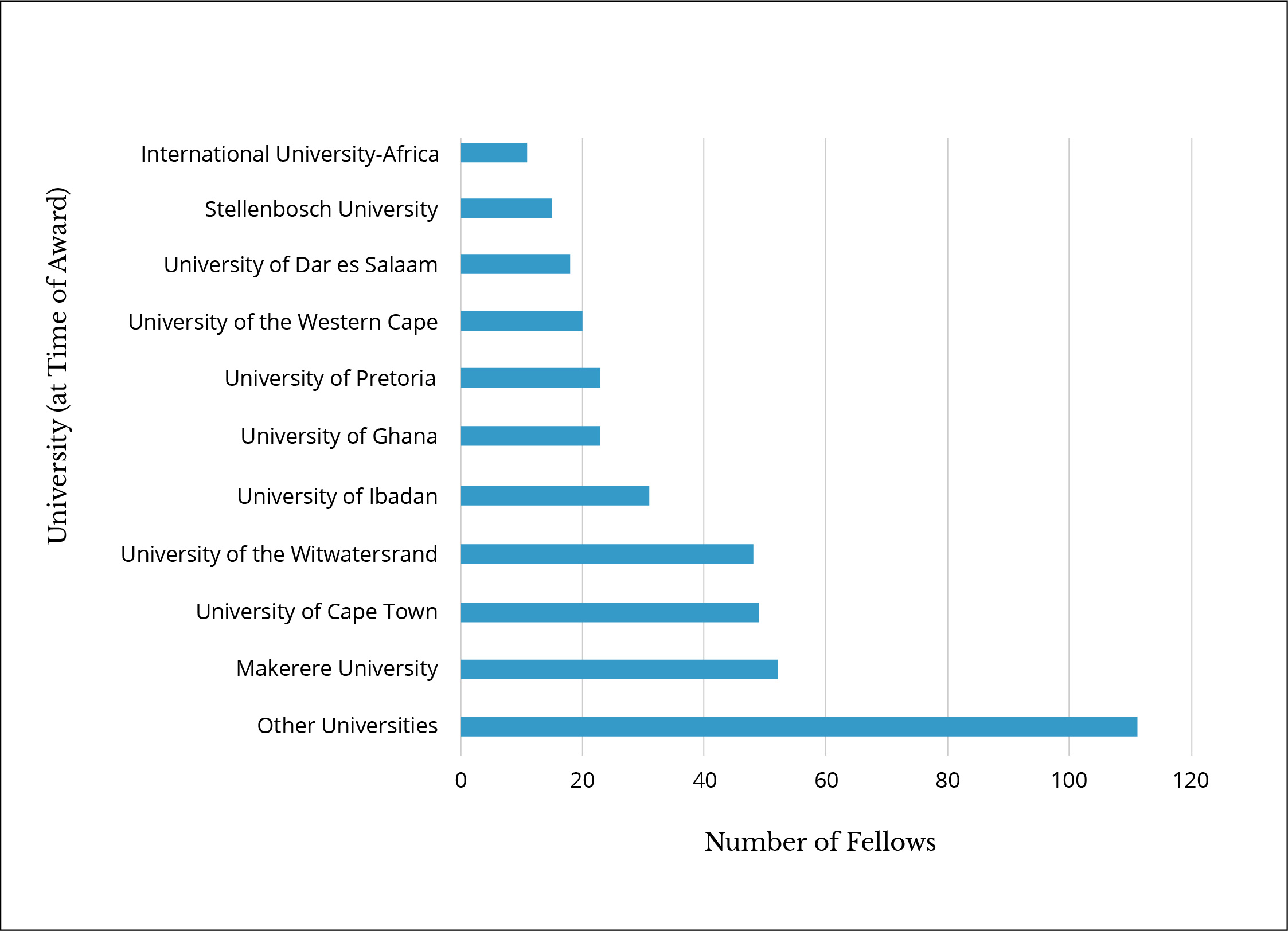
Gender diversity
For a decade now, Next Gen has worked to increase the participation of women in our fellowship competition. Women doctoral students in Africa must balance competing demands such as family obligations and childcare, while at the same time are expected to perform at the same level as their male counterparts. While Next Gen has often made deliberate attempts to have a significant female presence in each cohort, the program is confronted with the reality that most graduate schools in Africa are asymmetrically populated by male doctoral students. Except for South Africa, all the five eligible countries in the competition often have a higher ratio of male to female students, from applications submitted to the projects that are finally funded.
Figure 4 shows that over a decade, about 56 percent of fellowships were awarded to males, while about 44 percent went to female applicants. However, this generalized picture masks the sharp gender disparities in individual countries.
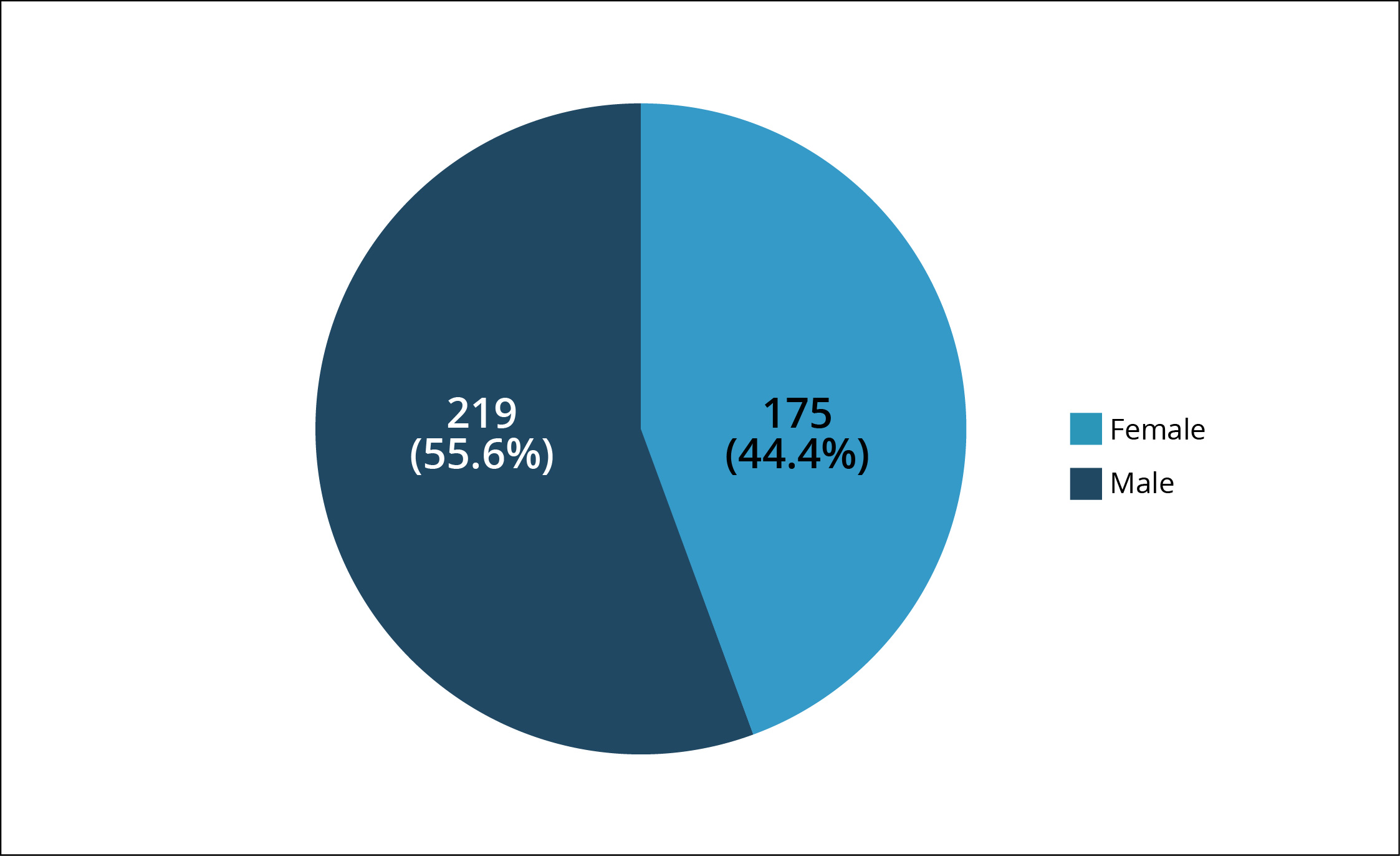
As seen below, in figure 5, the latest cohort in 2021 had more successful female applicants (56 percent) than male (44 percent). This is despite the fact that the entire pool of all submitted applications in 2021 was mostly from male applicants, at 57 percent (170 applicants) compared to female 42 percent (126 applicants), replicating a common trend over the years.
While the overall trend is toward better gender balance, over the last ten years, 2017 and 2021 are the only years in which female grantees exceeded male grantees. The situation is a little more complex when the analysis is narrowed to individual countries. For instance, for the past ten years of Next Gen funding of Uganda-based doctoral students, 67 percent of the funding has gone to male applicants. A similar asymmetry of 67 percent in favor of males applies to Tanzania as well. In both Kenya and Nigeria, about 60 percent of the successfully funded proposals went to male applicants. In Ghana, 55 percent of Next Gen grants have been awarded to male doctoral students. The ratios are flipped only in South Africa, with female applicants accounting for slightly over half (52 percent) of the successful projects.

Conclusion
So, what general conclusions can we draw from this data collected over the last ten years? First, students at South African institutions will likely continue to be more competitive compared to those of other countries. This is true not only because they seem to attract the best of academic talent at the faculty level in Africa, but also because its universities continue to attract a significantly high number of doctoral students from the rest of the continent. It is also common for doctoral students in South Africa to be “pushed” and exposed to seek external funding for their doctoral studies. In view of this, Next Gen has recently launched outreach initiatives and national proposal workshops in an attempt to reach countries and universities that have previously not been very successful in winning Next Gen grants. This year, Next Gen has conducted outreach events in Ghana (University of Ghana), Nigeria (Federal University, Kashere), Tanzania (University of Dodoma and St Augustine University of Technology), and Kenya (Maseno University and University of Eldoret).
Second, the impact of such programs as the Makerere Institute of Social Science Research (MISR) which support and promote social sciences, is reflected in its consistently high number of successful applicants. MISR, a graduate school with a well-defined research and doctoral training program, combined with a strategy of mobilizing research funds, presents an effective model that can be adopted by other African universities. Third, Next Gen remains determined to have diversity in the applications we receive and the projects we fund. Diversity in our program includes, but is not limited to, having higher rates of female participation and representation from a wider range of universities.
Over the past decade, Next Gen has consolidated its place in higher education funding in Africa. The impact of our fellows and alumni within the social sciences has been considerable and shows the importance and need for more funding of African doctoral students. This is especially the case for social scientists in Africa who are often compelled to justify their relevance in the context of massive funding cuts and governments that privilege funding STEM research. Receiving about 450 applications in each competition cycle, and awarding only about 45 fellowships, the Next Gen program is only scratching the surface of an important and promising pool. Today, Next Gen continues on the path of building a strong community of social scientists in Kenya, Nigeria, Uganda, Tanzania, South Africa, and Ghana, many of whom are now emerging as academic and research leaders across Africa.












